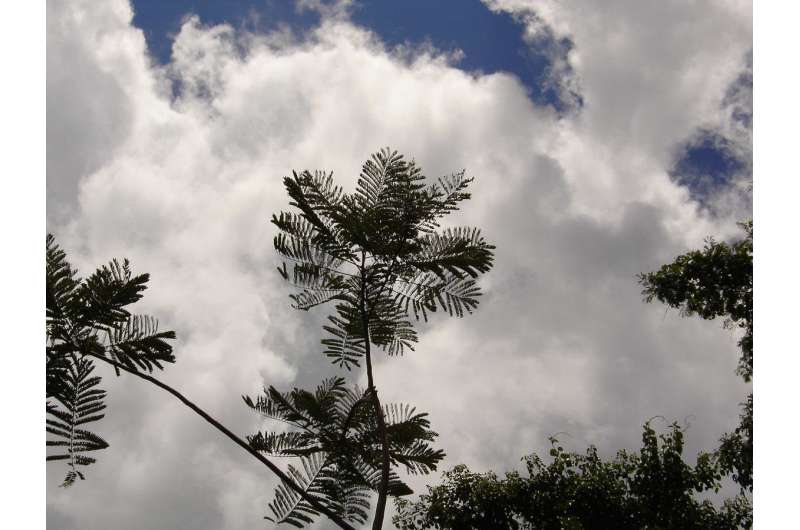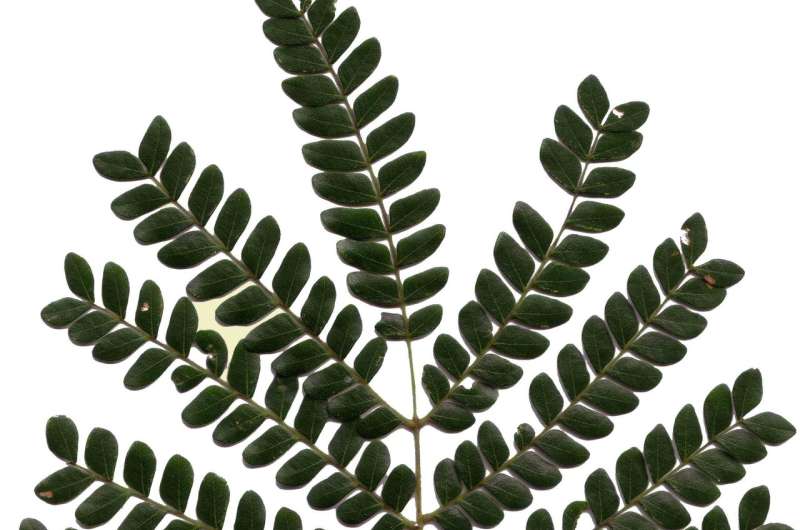Tree species vital to restoring disturbed tropical forests

A family of trees with high drought tolerance could be crucial in restoring the world's deforested and degraded tropical lands, according to new research involving the University of Stirling.
Experts analysed more than 40 sites across the Neotropics – which includes the tropical regions of Central and South America – and found that Leguminosae trees are critical for tropical forest regrowth in dry regions, due to their resistance to drought.
Leguminosae are herbaceous plants that people will know such as peas and runner beans, but many species in this family are canopy trees that play an important role in tropical forests.
Although the benefits of Leguminosae are well known, scientific understanding of the abundance of the species has previously been biased towards wet tropical regions. Significantly, this study found that, during the first three decades of natural forest regeneration, legume trees were twice as common in dry compared with wet secondary forests.
The findings emerged from a global study involving Dr. Daisy Dent, a Lecturer in Tropical Ecology within Stirling's Faculty of Natural Sciences, who led the collection of forest census data from a site in Panama, where she has been working for more than 12 years.

Dr. Dent said: "Our study shows that trees in the Leguminosae family are critical to tropical forest regrowth in dry regions.
"As global temperatures warm and dry conditions become more widespread in the tropics, this has major implications for forest recovery across the region."
Leguminosae trees are important in secondary forests – woodland areas that have re-grown after forest clearance – as they have high drought tolerance and many can fix nitrogen from the atmosphere. Therefore, they are not limited by the low water availability and poor soils typical of abandoned pastures, where young forests regenerate.
The overall study – which included data from 42 sites spanning the Neotropics – was led by Dr. Maga Gei and Jennifer Powers, both of the Department of Ecology, Evolution and Behaviour at the University of Minnesota. Dr. Dent commented: "This is a huge collaborative effort that indicates the benefits of collating data to generate broad-scale regional datasets that have significantly greater impact than studies from individual sites."
The findings could play a key role in achieving the goals set out by the Bonn Challenge, a global effort to bring 150 million hectares of the world's deforested and degraded land into restoration by 2020, and 350 million hectares by 2030. Dr. Dent said: "In light of the goals of the Bonn Challenge, our study will directly influence how we match tree species to site conditions to maximise the effective restoration of degraded tropical lands."
The paper, "Legume abundance along successional and rainfall gradients in neotropical forests," is published in Nature Ecology & Evolution.
More information: Maga Gei et al. Legume abundance along successional and rainfall gradients in Neotropical forests, Nature Ecology & Evolution (2018). DOI: 10.1038/s41559-018-0559-6
Journal information: Nature Ecology & Evolution
Provided by University of Stirling




















